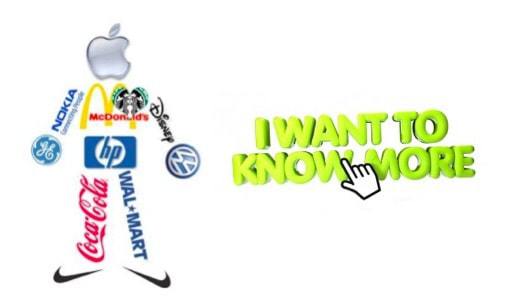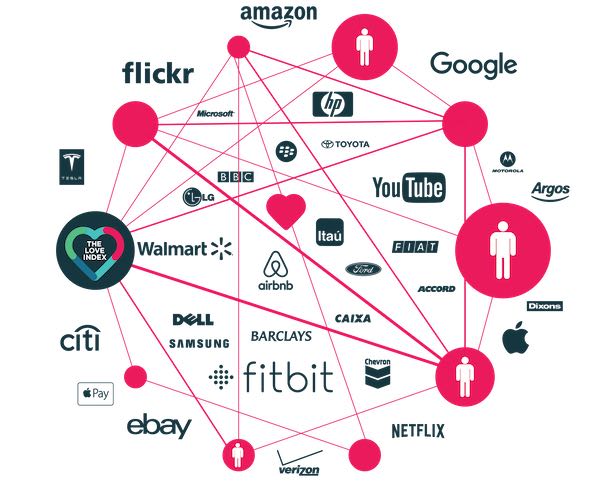Brand equity is the holy grail in the subject of branding. The ultimate objective of a branding team is to increase the brand equity of an organization. This can be done in various ways, but one of the ways is to use the Keller’s Brand equity model or CBBE model of Keller.
We recently wrote an article on managing brand equity which was much appreciated by our readers. We have also written about Aaker’s brand equity model which is a bit different from Keller’s but also focuses on building brand equity for an organization. Ultimately, both Aaker’s and Keller’s model says that brand equity is important for the firm and is the sustainable advantage that the firm can have.
Table of Contents
What is the CBBE Model or Keller’s Brand equity Model?
Keller’s Brand equity model is also known as the CBBE model which stands for Customer based brand equity. As Marketing evolved, the customer became the main focus of the company. Companies knew that if they keep their customers happy, they will profit. But how do these companies make a connection with their customers? It is by building a strong brand.
The CBBE model or the Brand equity pyramid is actually a pyramid which tells us how to build brand equity by understanding your customers and implementing strategies accordingly. If there is a connection between the brand and the consumer, it results in strong brand equity & has a better chance of acquiring and sustaining customers, thereby giving a huge advantage to the companies and products which are considered as “brands”.
By using the Brand equity pyramid or the CBBE model, brands know which strategies to implement and how to give the right experiences to their audience so that they create the WOW factor.
Example – We love brands like Nike and Adidas which are focused on sports. It is through years of targeting and then branding in this category that they have been able to build a solid brand equity. Same goes for BMW and Audi, brands which have worked hard to be known as luxury sports car makers.
Let us understand the model in detail.
The image below shows the Brand equity triangle. As we can see, the triangle is divided into 4 parts. 2 out of these 4 parts are further divided. Thus, there are total 6 building blocks in Keller Brand equity model.
Level 1 – Brand Identity or Who you are
Brand identity is the way the customers look up to a brand and how they distinguish each brand from another. It is how the brand defines itself in the eyes of the customer. Imagine a human being introducing himself to another. Mostly this includes telling people about yourself and what you do. A similar concept applies to building a brand identity.
Brand identity is built when customers are unaware of your products. The work for the brand here is to build a strong brand identity for the benefit of the brand and to attract the customers. We talk a lot more about brand identity in this article. We have also explained the Brand identity prism while taking Pepsi as an example.
Because brand identity is the first step in the equity model, it is the most important step and the base of the Brand equity pyramid. If the base is strong, the pyramid will be stronger. Thus, the stronger the brand identity you build from the start, the better it is for your brand.
How to use Brand identity to build equity?
Many online companies nowadays spend billions on advertising and creating awareness even before they have profits in the firm. This is done to create a brand loyalty, identity and build brand awareness right from the start. A massive advertising campaign right at the start ensures that every target customer is aware of the brand and its values are being communicated directly to the customer.
As a result, there is no misinformation and the promise going to the customer is directly from the brand. A customer starts perceiving the brand through its communication and this builds brand identity. This is clearly the Awareness and Identity creation stage and the brand is more involved in telling customers “Who they are”
Level 2 – Brand Meaning – What are you?
Once you meet a human being and know who they are, there are other questions which are formed in your mind. What do they do? Where are they working? How well is their life? So on and so forth. Just like these questions come to the mind for a human being, customers want to know more about brands as well.
Once a customer is aware of the brand, he wants to know more about the brand. He would like to know whether the brand is reliable, whether it is good to use over a long period of time if it has good customer service and other such important information. The customer is understanding what the brand is and trying to know more about it. You can understand more about the meaning of brands from this article.
This second level of Keller’s Brand equity model is divided into 2 parts – factors which define the brand meaning for customers
A) Brand Performance – The performance of the brand is important for the customer loyalty. Companies like Bosch, Siemens, Caterpillar and many others have become what they are because of their performance over time. Nor only physical products, even services like Google, Microsoft, Apple Operating systems are loved and trusted because of their performance over time. There are 5 further factors in brand performance which are considered
- Product Features
- Product Reliability
- Customer Service
- Style & Design
- Pricing of the product or service.
B) Brand Imagery – What is the brand image in the eyes of the customer? How does the customer perceive the brand if it were a human? Does he think the Brand is rugged, or does it think the brand is soft? BMW needs to be rugged but Barbie needs to be soft as a brand. Targeted marketing and word of mouth can build a strong brand image for the brand. Here is an article on how to build a brand image.
Level 3 – Brand Response – What are the feelings for the brand?
Once a customer buys your product, he builds up expectations towards the brand and the purchase. If the reality matches his expectations, then the customer is very happy and has positive brand feelings. If the product goes beyond expectations, it generates huge word of mouth and may turn the customer to become a brand advocate. Such positive experiences generate “Feelings” in the minds of customers.
However, if the experience is bad, the customer is left with negative feelings for the brand which can also be known as “Judgements”. As per the model, a brand which has more feelings then judgements is a brand which benefits in building brand equity. Hence, the Brand response is higher up in the Brand equity pyramid.
Boost Your Brand Equity with These Insights:
Practical Tips: To maximize the effectiveness of Keller’s CBBE model, prioritize building a strong brand identity by ensuring consistent messaging across all platforms. Invest in customer feedback mechanisms to continuously improve brand performance and align with customer expectations. Additionally, leverage social media engagement to enhance brand imagery and foster a deeper connection with your audience.
Quick Statistics: According to a 2023 report by Nielsen, brands that actively manage their brand equity using structured models like CBBE experience a 25% higher customer retention rate. Furthermore, a study by BrandZ in 2023 found that strong brand resonance can lead to a 30% increase in brand loyalty and a significant boost in word-of-mouth referrals.
The difference between judgements and feelings is fine but we have explained the same with some examples. Below
- Judgement – The customer has never experienced the brand but has multiple negative words of mouth for the brand.
- Judgement – Customer has experienced the brand but not found it up to mark.
- Feeling – The product was as per expectations but not superior or beyond expectations for the customer to take repeat action (average feeling)
- Feeling – The customer service was excellent, making the customer a brand advocate.
Thus, based on the various experiences of the customers, they build positive feelings or negative judgements towards the brand and respond accordingly.
The balance between “Judgements and feelings” is important for the brand to build a brand equity. If there are too many customers holding negative judgements for the brand, you may try your level best to sell your products, but the products will not sell in the market due to these judgements. You need to have a higher amount of positive “feelings” to counter the negative judgements.
As a result, the measurement of post-sale behaviour and brand response in the market is essential for a company which is serious about building brand equity. Companies need to build positive feelings for which they need holistic marketing so that the customer is happy at the various touch points of the brand.
Level 4 – Brand Resonance – A strong relationship
We mentioned becoming a brand advocate several times in the above paragraphs. A brand advocate is one who has reached the final level of the Brand equity pyramid in Keller’s Brand equity model.
There are very few brands which reach this level. This is a level where there is a huge social and psychological connect of the brand with the customer. If you ask me, I love my MacBook and I am doubtful of buying any windows laptop in the near future. In fact, due to my recommendations, many of my friends have also bought the MacBook.
Harley Davidson is a brand which is the epitome of Brand resonance in the CBBE Model. Harley Davidson bikers are known to love their bikes and the feeling of the ride and generally Harley is the only bike they ride. Not only are the customers connected with the brand, if they find another user using the same brand, a connection is built between the 2 customers as well. It’s like finding another friend just because he uses a brand you love.
The various factors for brand resonance are
- Behavior
- Values and attitude
- Engagement of customers
- Connection and feelings
Pioneer brands try to achieve the level of Brand resonance in the Keller’s Brand equity model.
Summary
Keller’s Brand equity model is brilliant as it tells a brand which stage the brand belongs to and what it can do to go higher up the stage. Ultimately, it guides brands on building brand equity. There are numerous stages of the Brand equity pyramid and moving from one stage to the other might take years.
If you actually look at the CBBE Model, then building the brand identity itself is tough for startup brands, moving up the pyramid is even tougher. Hence, brands which reach the level of brand resonance are actually the brainchild of 100’s of marketing and branding executives and creative campaigns over the year. They are also the result of a lot of efforts gone into products and services.
The takeaway from Keller’s Brand equity model is that it is not easy to build a brand and to do the same you need to start holistically. All your departments across all locations need to be working towards a common goal in mind – Brand resonance and a connection with the end customer.
Liked this post? Check out the complete series on Branding



I browsed about Keller’s CBBE model and all the other websites had complex language, which was confusing. This page is amazing. I understood the concept really well.